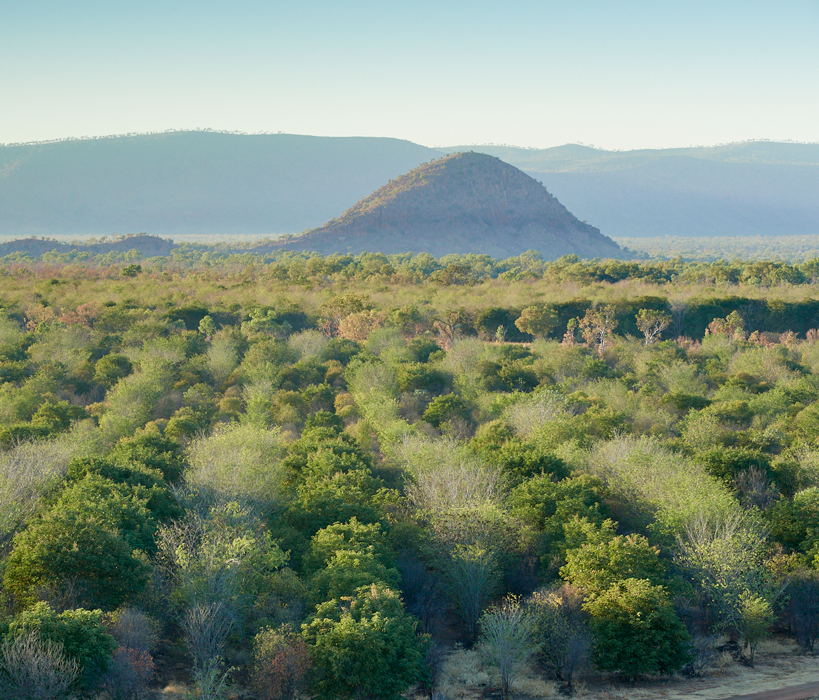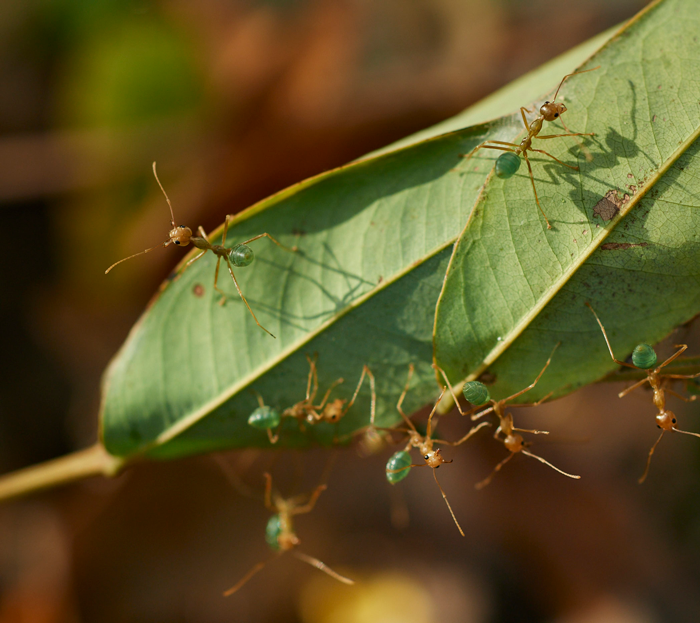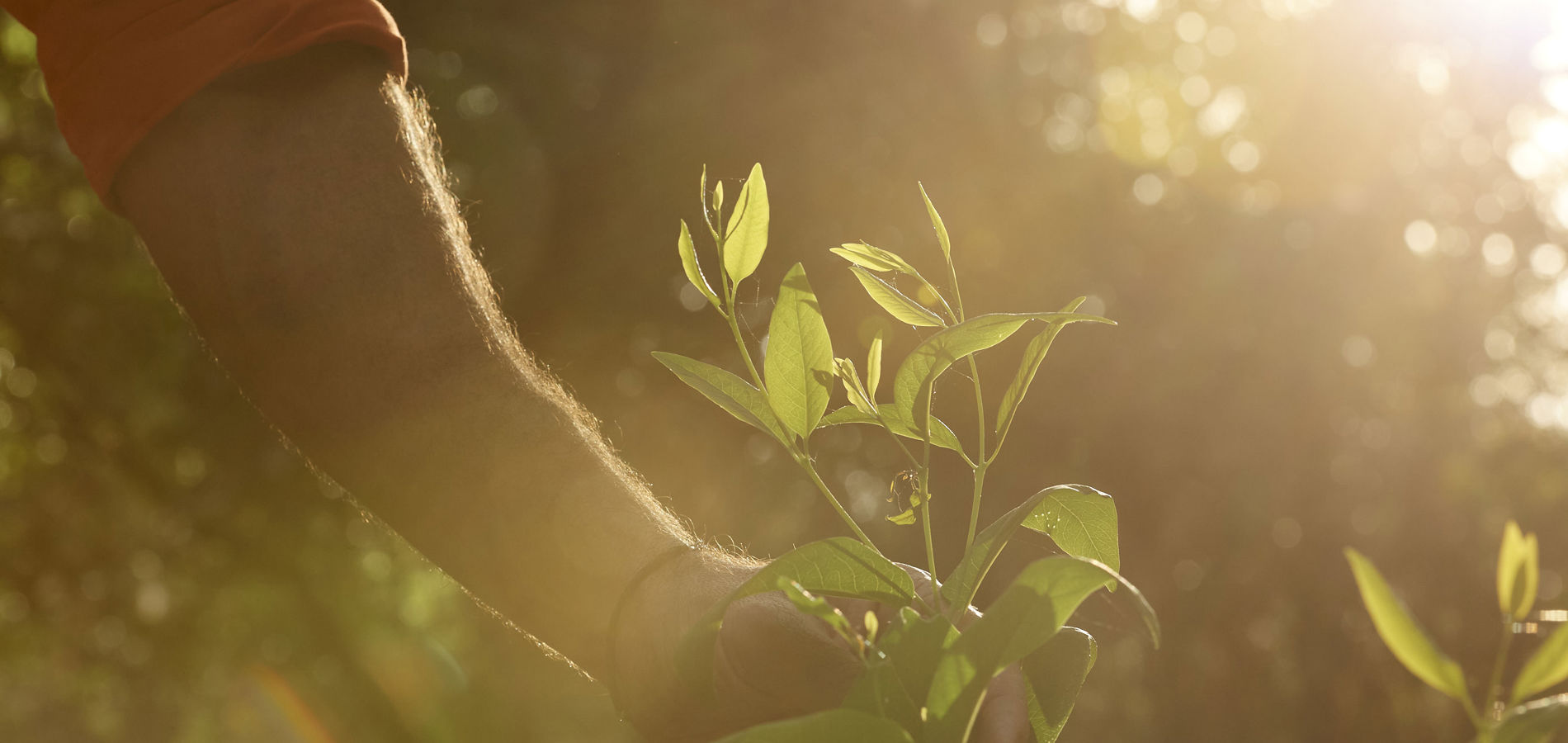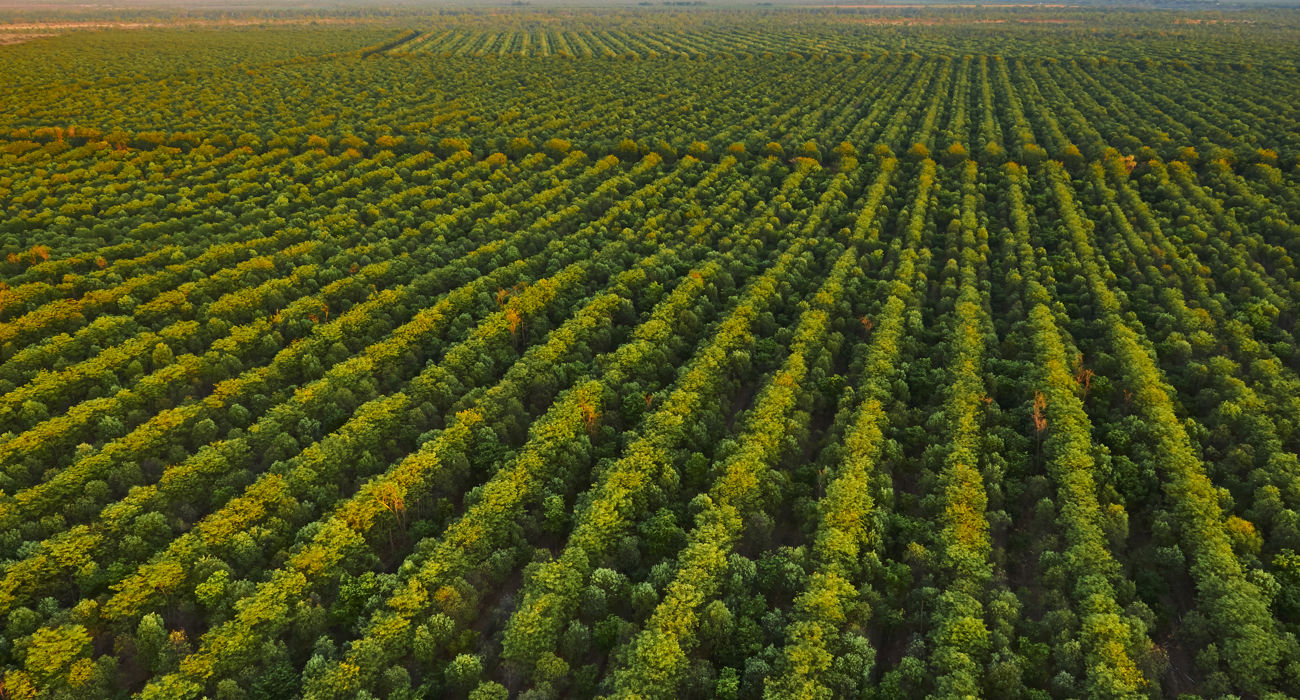Our Mission
We were born out of a desire to ensure the sustainable and ethical supply of Indian sandalwood (Santalum album) and Australian sandalwood (Santalum spicatum) and have dedicated the past 20+ years to doing so.
Sustainability is in our DNA. Our vision is to see the species thrive for decades to come and to uncover more about its wellness properties, sharing our discoveries with the world. As we grow, innovate and remain committed to achieving business outcomes, we aim to do so without compromising our community, environment or our people. This is at the heart of our approach to sustainability.
At Quintis, our commitment to responsible forest management is paramount. In line with our dedication, we are proud to be FSC® certified (license code: C161 853) for Forest Management—the gold standard in sustainable and responsible forest management. We are proud of what we have achieved over the past two decades but recognise there is still much to be done. We have developed a robust sustainability strategy which focuses on key areas critical to our industry, clearly outlines the steps we are taking to achieve a more sustainable future and lists the outcomes against which we will measure our progress.
You are invited to read our 2021 Sustainability Report and join us in making tomorrow better.
2021 Sustainability Report
This report outlines our commitment to sustainability;
to being today’s best, and tomorrow’s better.
Sustainability by Numbers
Below are some of our sustainability highlights.


Biochar for Climate Change
Amid the forests of our Kununurra and Kingston Rest plantations lie 63 plots where we are trialling what could be a climate game-changer: biochar. This is a carbon-rich material created by slowly ‘baking’ our host sandalwood trees and waste biomass in a pyrolysis kiln. According to recent studies, biochar could curb climate change, cutting down greenhouse emissions and increasing the carbon cycle’s latency by hundreds, if not thousands, of years.
“It greatly reduces our carbon footprint,” says Regional Research Forester, Dr Precila Gonzales, in charge of the initiative. Once created, biochar is inserted into the soil effectively removing carbon dioxide that could have been emitted into the atmosphere and storing it underground where it does not contribute to global warming. One of the world’s top experts on biochar has calculated that if it was added to 10% of global cropland, 29 billion tonnes of CO2 would be sequestered5. “It’s a sort of cycle. We don’t waste the carbon – it goes back into our ecosystem,” explains Dr Gonzales. “It will also benefit our plantations by enhancing the soil structure and raising productivity.”
Our Sustainability Focus Areas
Following a deep dive into our operations and honest, meaningful discussions with clients and other stakeholders, we have identified the following key focus areas that will drive our sustainability strategy in the coming years. Within each of these focus areas is a list of specific actions we will be taking, closely aligned to the United Nations’ Sustainable Development Goals (SDGs).
Community
This focus area covers the elements of our operations that touch the communities we call home – from the ways we engage with our local communities generally to dedicated employment, education, and wellness initiatives. Together, these elements define our social impact.
Carbon
Despite our sandalwood plantations absorbing an estimated 195,000 tonnes of carbon a year, there is still more we can do to reduce the amount of carbon we produce. This focus area consolidates energy use, greenhouse emissions and climate change more broadly.
Sustainable Production
Here, we refer to our operations’ core tangible elements. On the ground, this refers to our Chemical use, waste management and water use. It also extends to our market development and sales. Putting our attention to these collective elements helps us secure the sustainable growth of our operations and our economy.

Pest Management through 'Beneficials'
When it comes to protecting our sandalwood trees from pest damage, wherever possible chemical intervention is a last resort. Quintis practises Forest Integrated Pest Management (Forest IPM) which uses a combination of cultural, biological and chemical technologies to reduce pest damage. Our first line of defence is usually of the biological kind, which includes insects. Simon Ong, Entomologist explains: “There are a lot of ‘beneficial’ insects. We have started to use biological controls, meaning we introduce other insects into our plantations to try and rectify pest issues in a natural way. We limit the amount of chemical intervention we have in the field, particularly when we identify a range of beneficial species. We don’t want to throw the plantation into chaos by trying to remove pests, but also removing our beneficial insects in the process”.
Through their work, Simon and his team have documented many unknown insect species, which are now included in the CSIRO’s (Commonwealth Scientific and Industrial Research Organisation) Australian National Insect Collection, an internationally recognised research collection that houses over 12 million specimens.
As foresters and leaders in the sandalwood industry, we take our role as stewards of the earth seriously. Inspired by the traditional owners of the land, we take an Indigenous perspective of the earth as a never-ending cycle of growth and care, we aim to give where we take, seeking innovative solutions to reduce our footprint and add value.
Forest Management
at Quintis
We believe that our commitment to sustainability is enhanced by our dedication to our forest management activities. Our responsibilities extend to the communities we operate in, to the people we hire and the environment we thrive in. Because of this, we have developed our forest management policy, along with associated forest management plan annual monitoring report and plantation maps, to help guide us in our day-to-day operations. To view a copy of our forest management policy, plan, monitoring report or our plantation area maps, please use the download accordion below. For additional queries, please click here.

